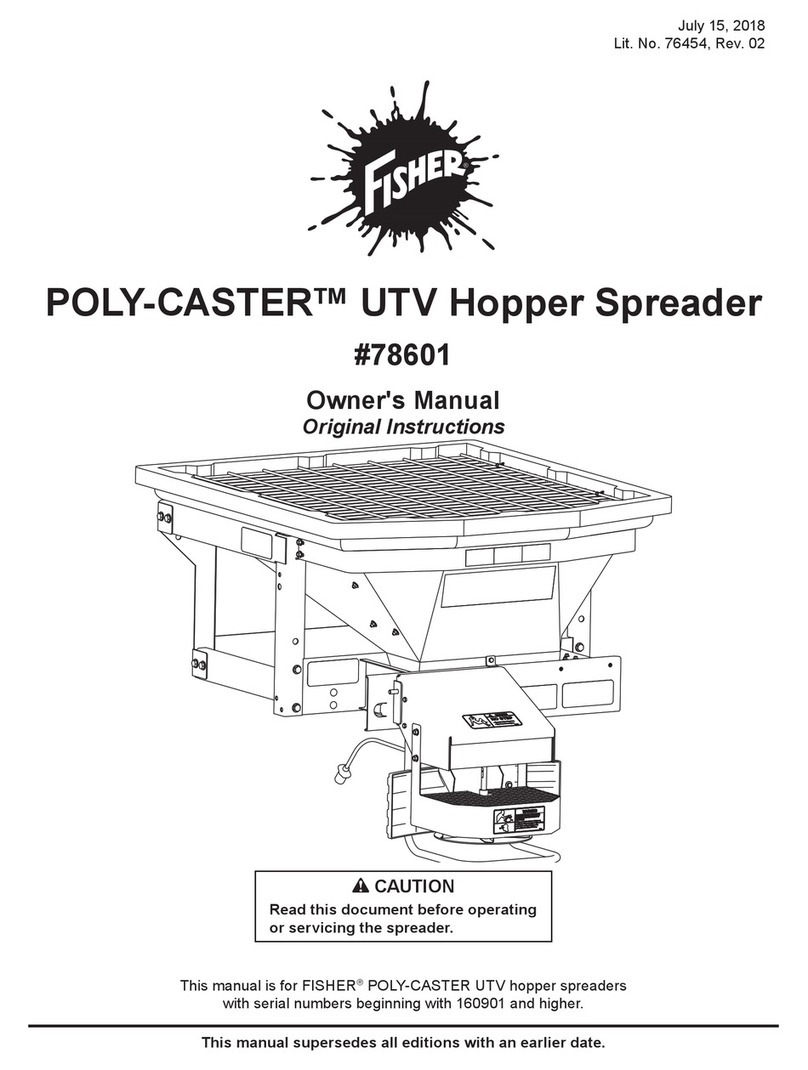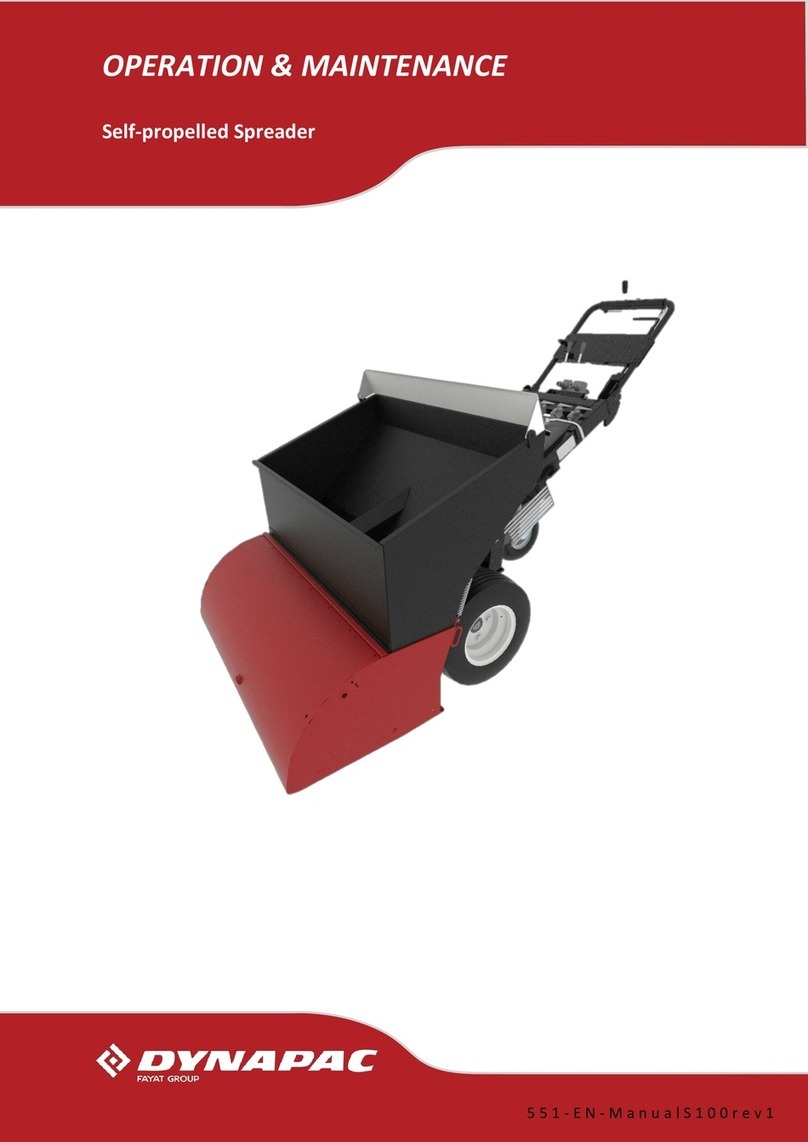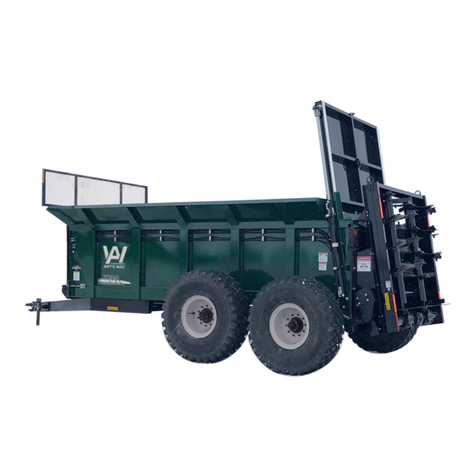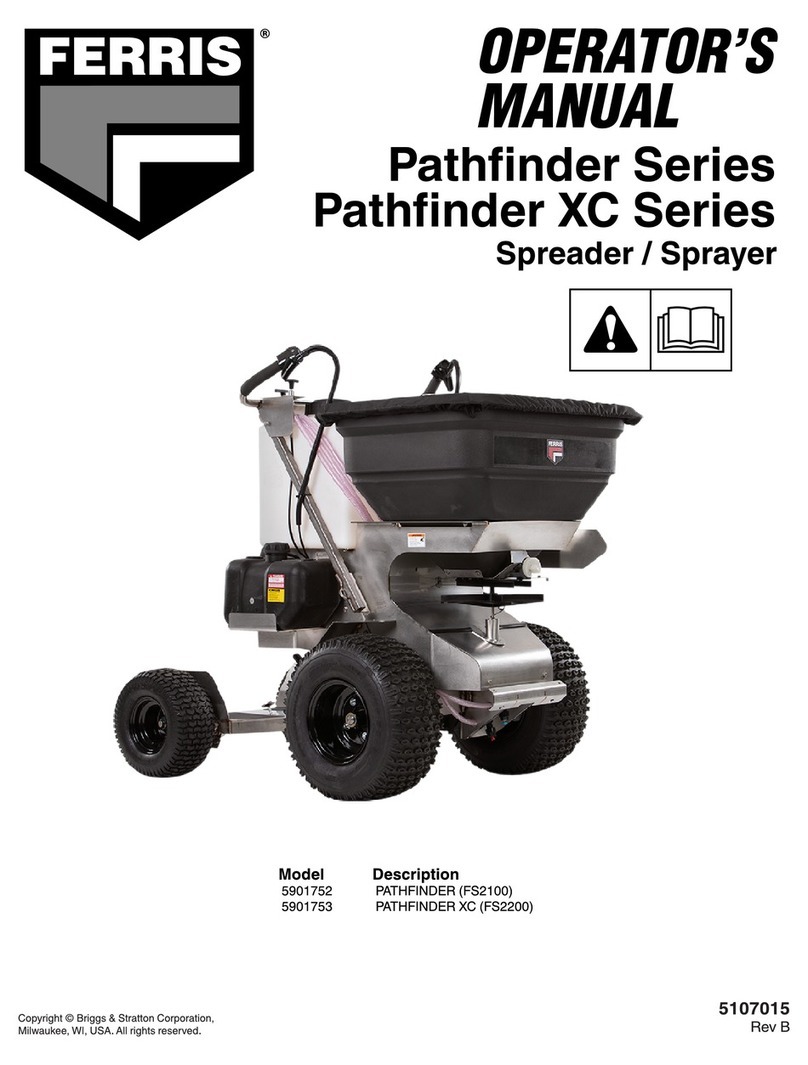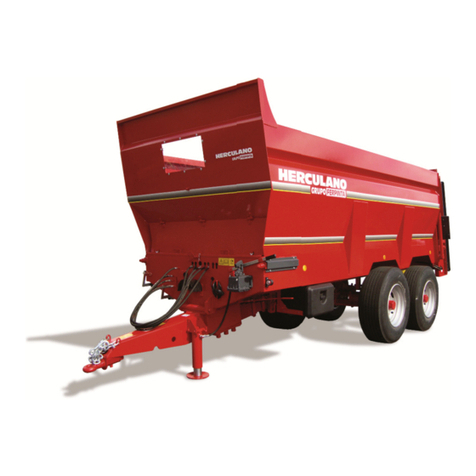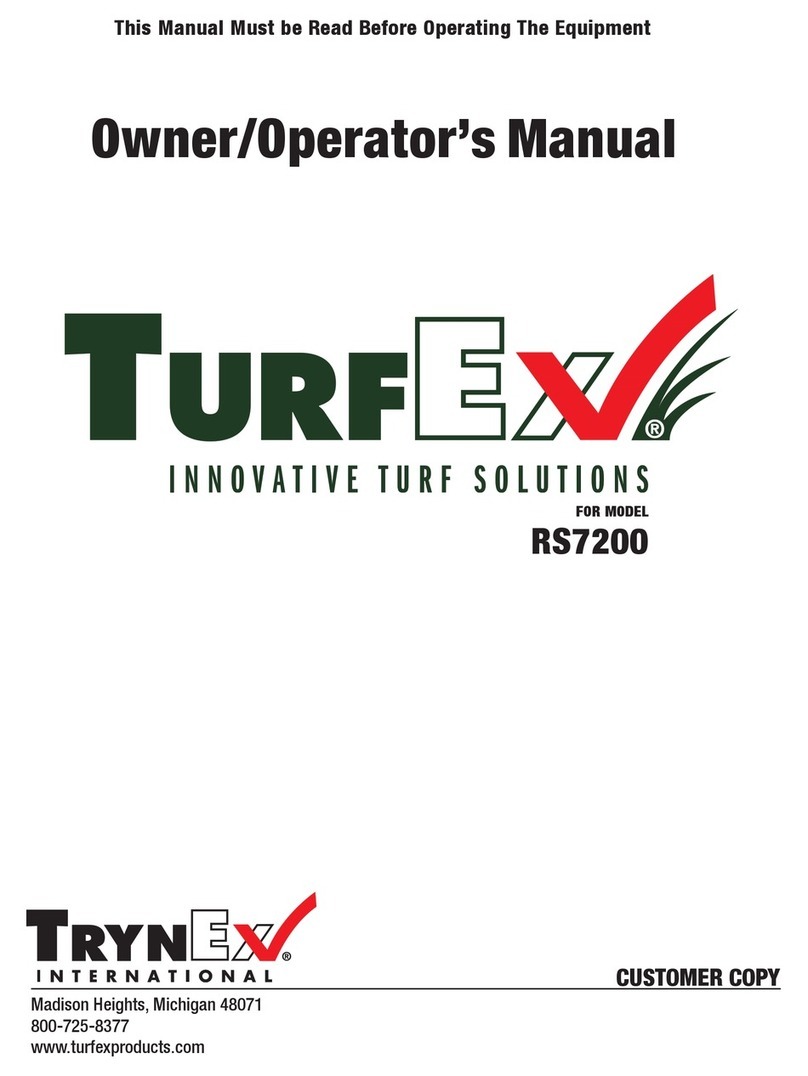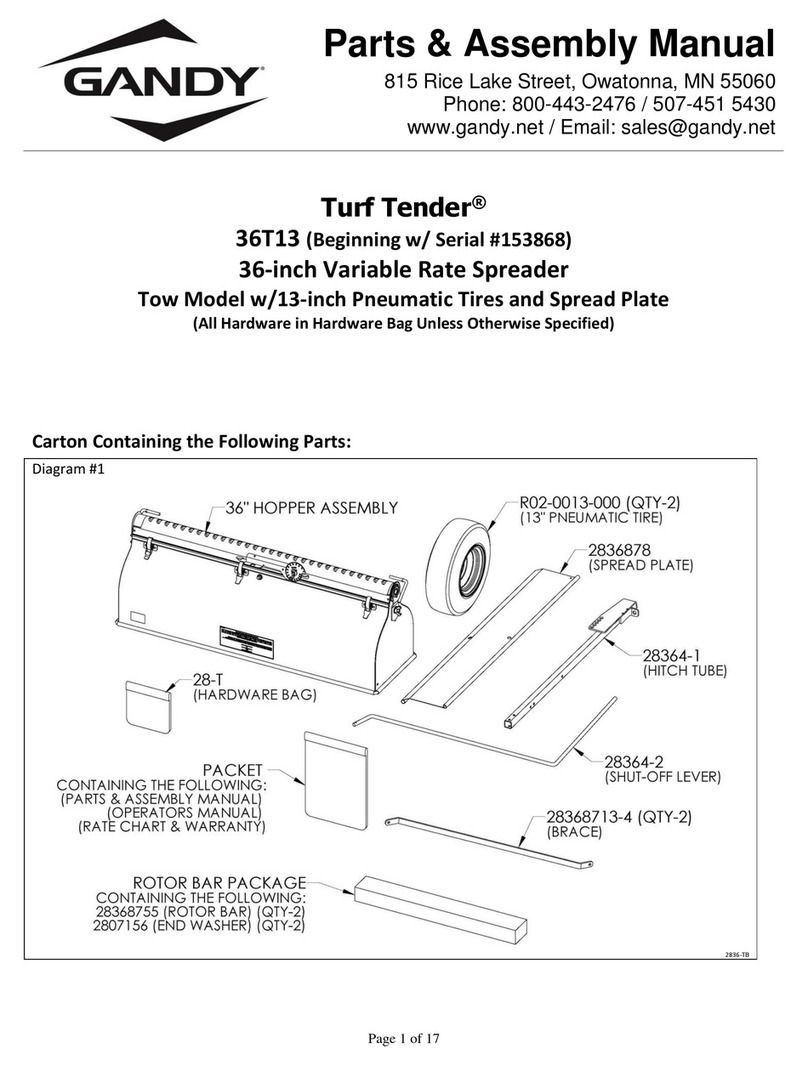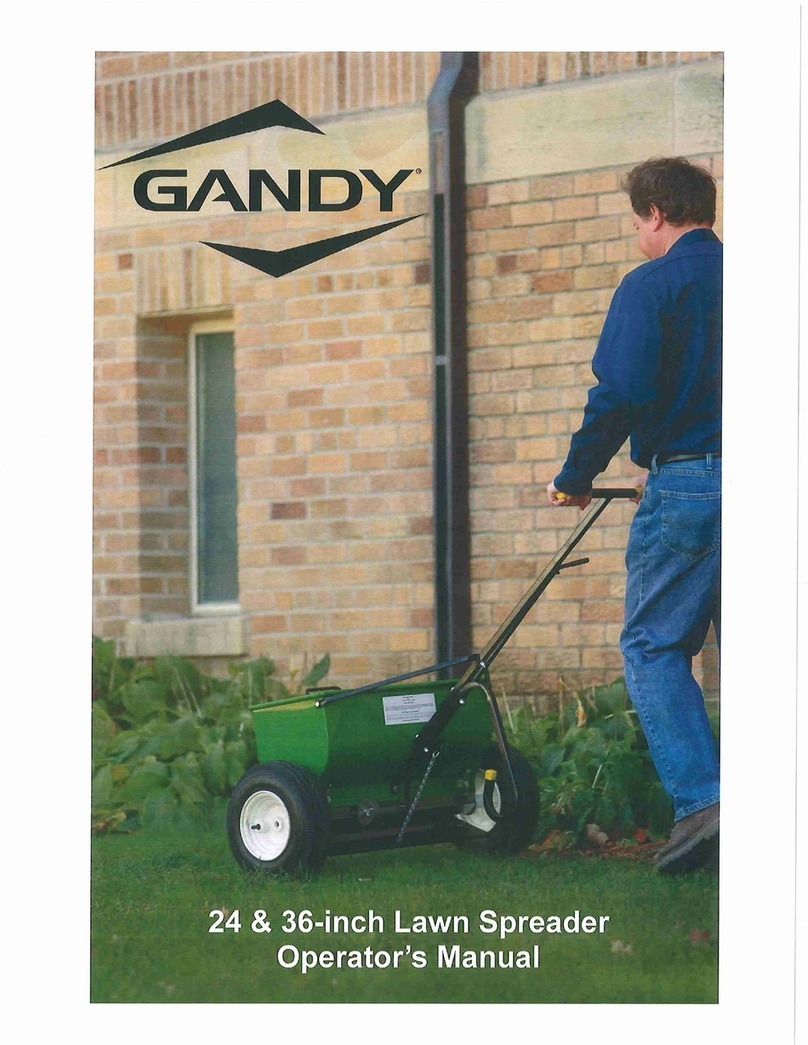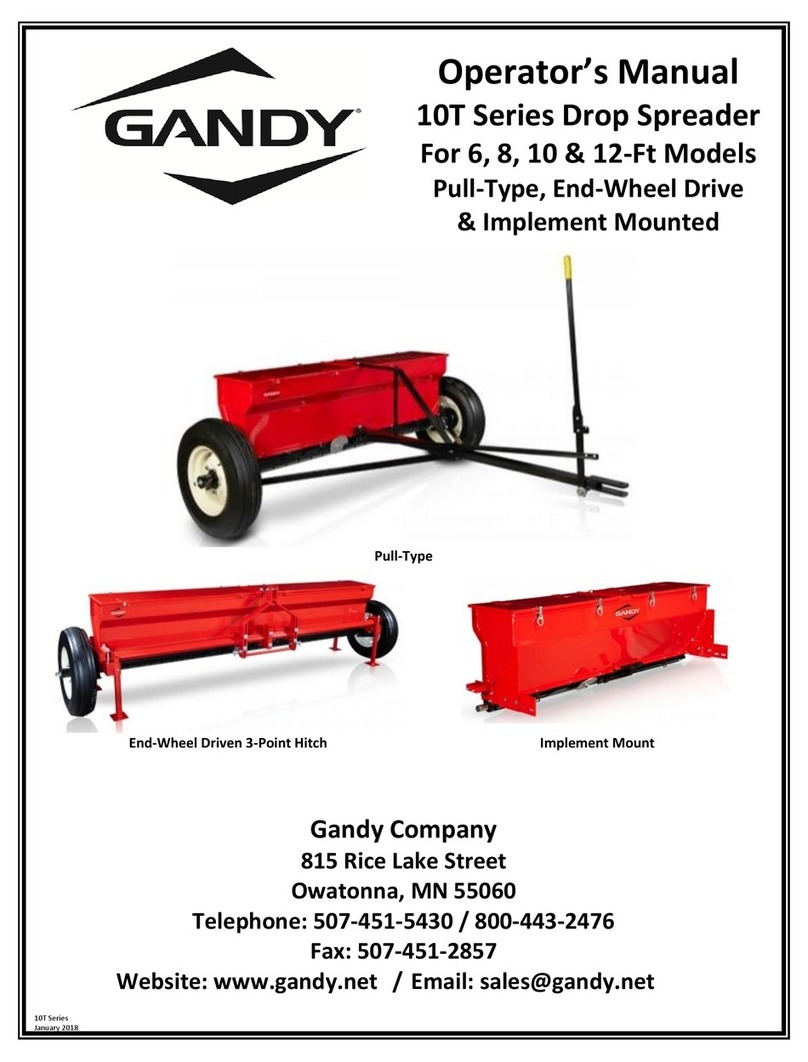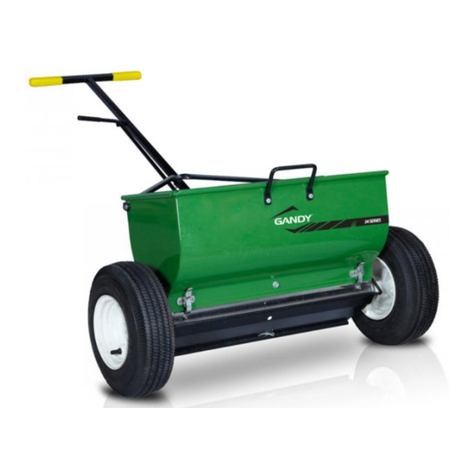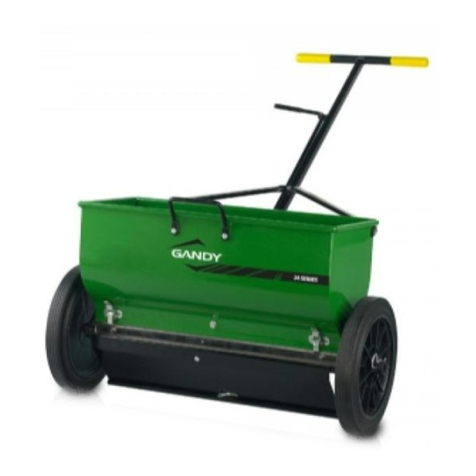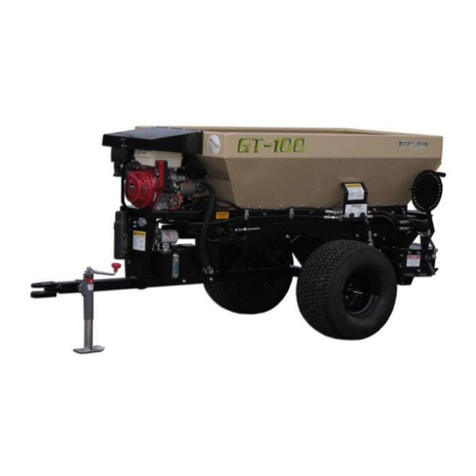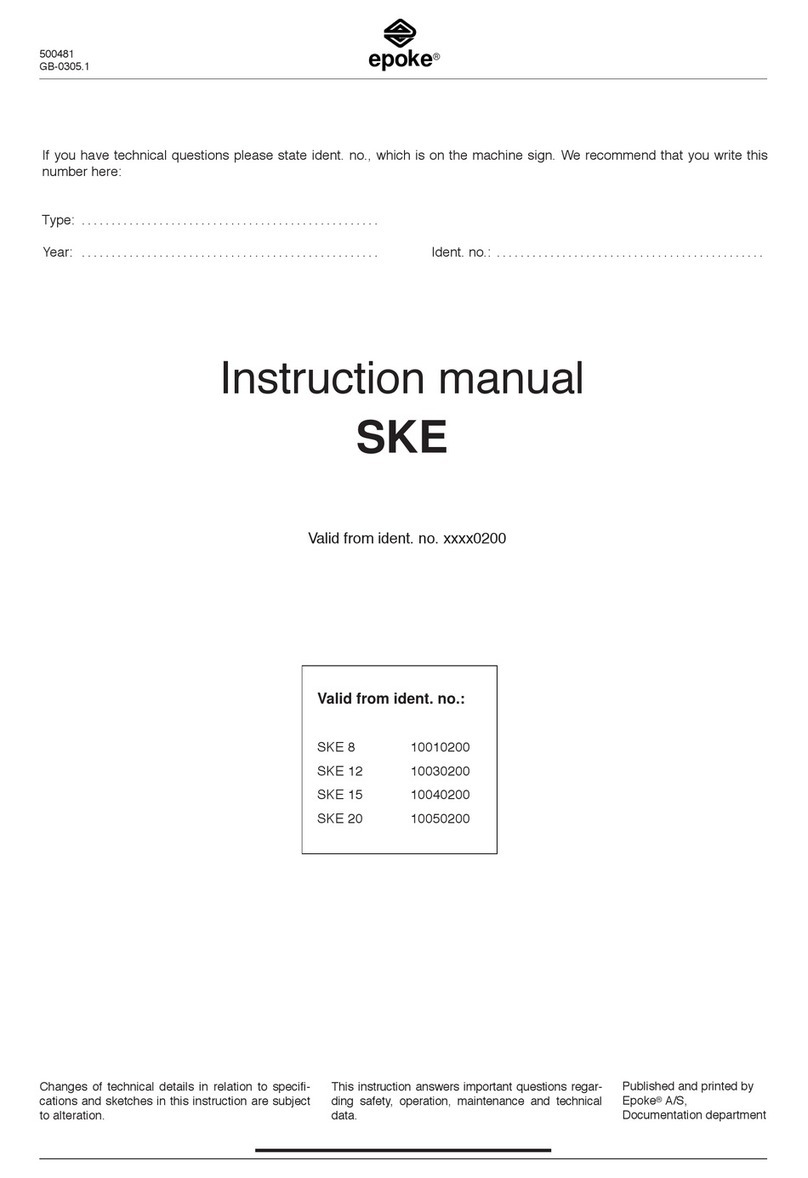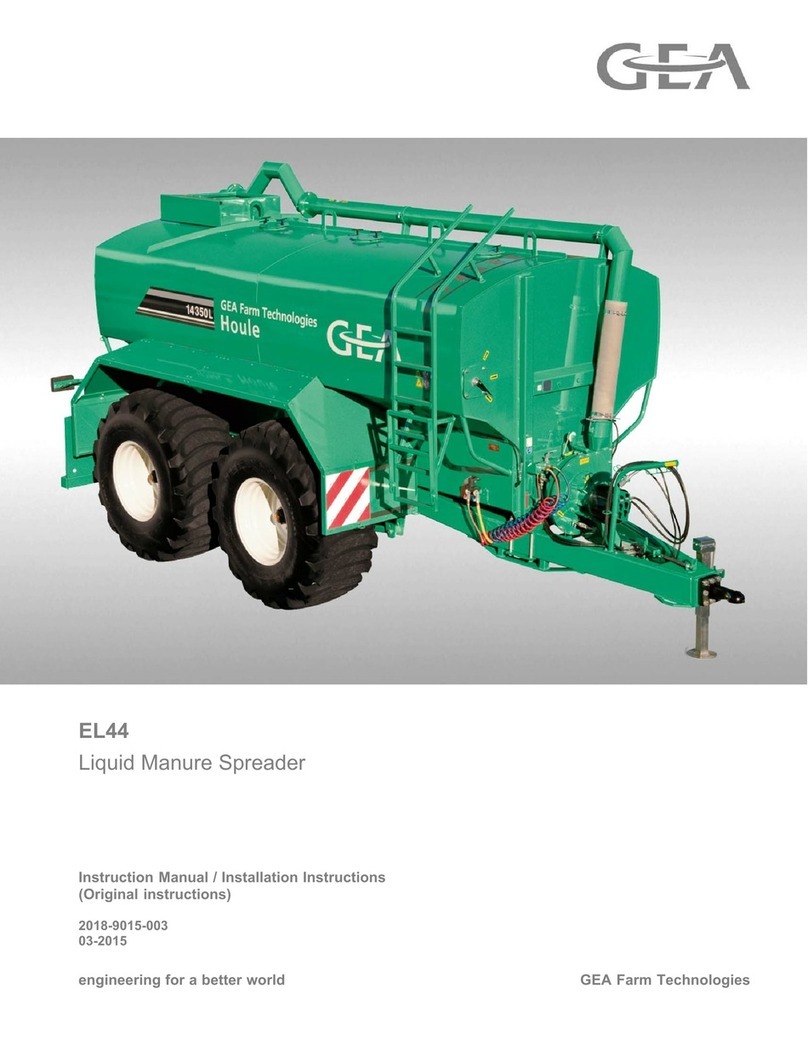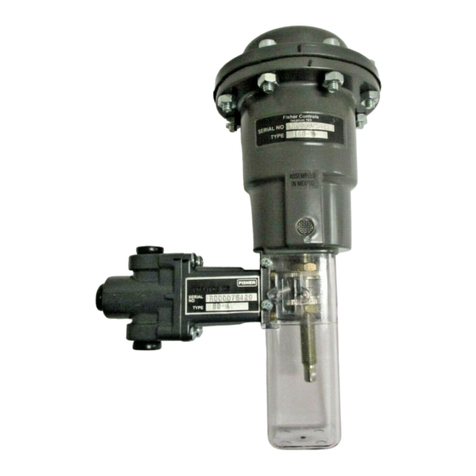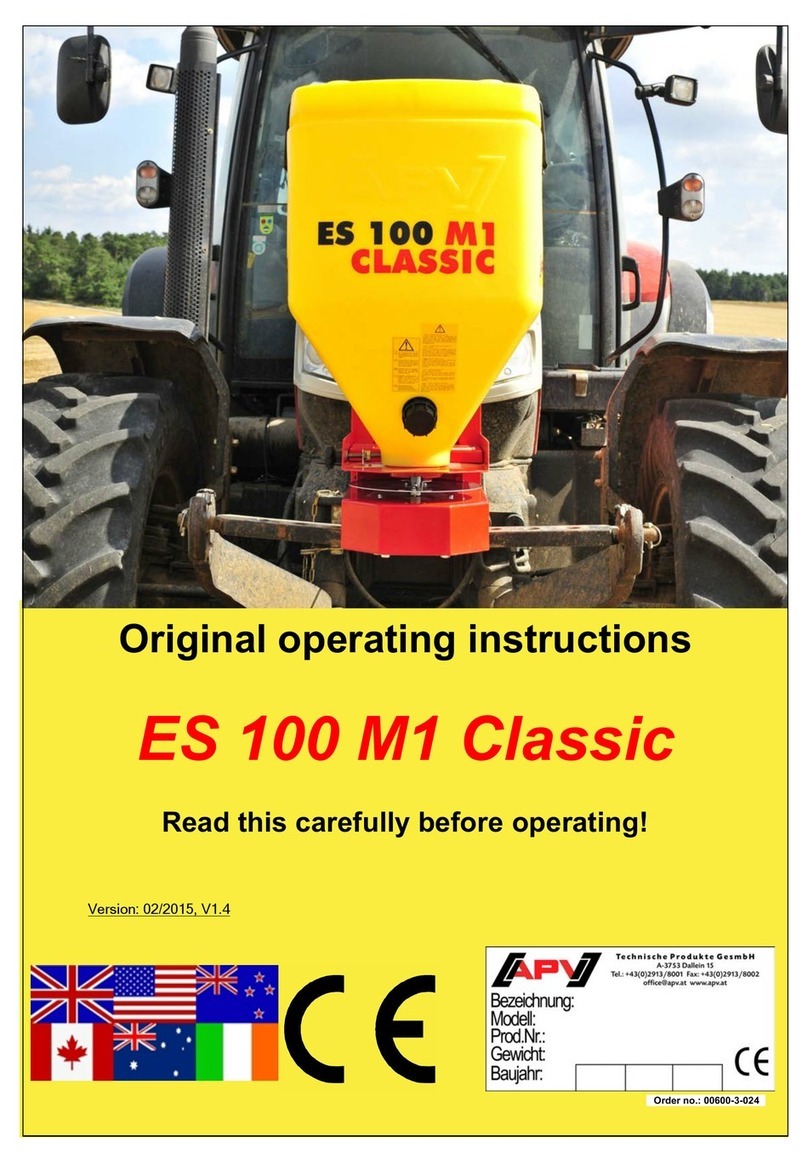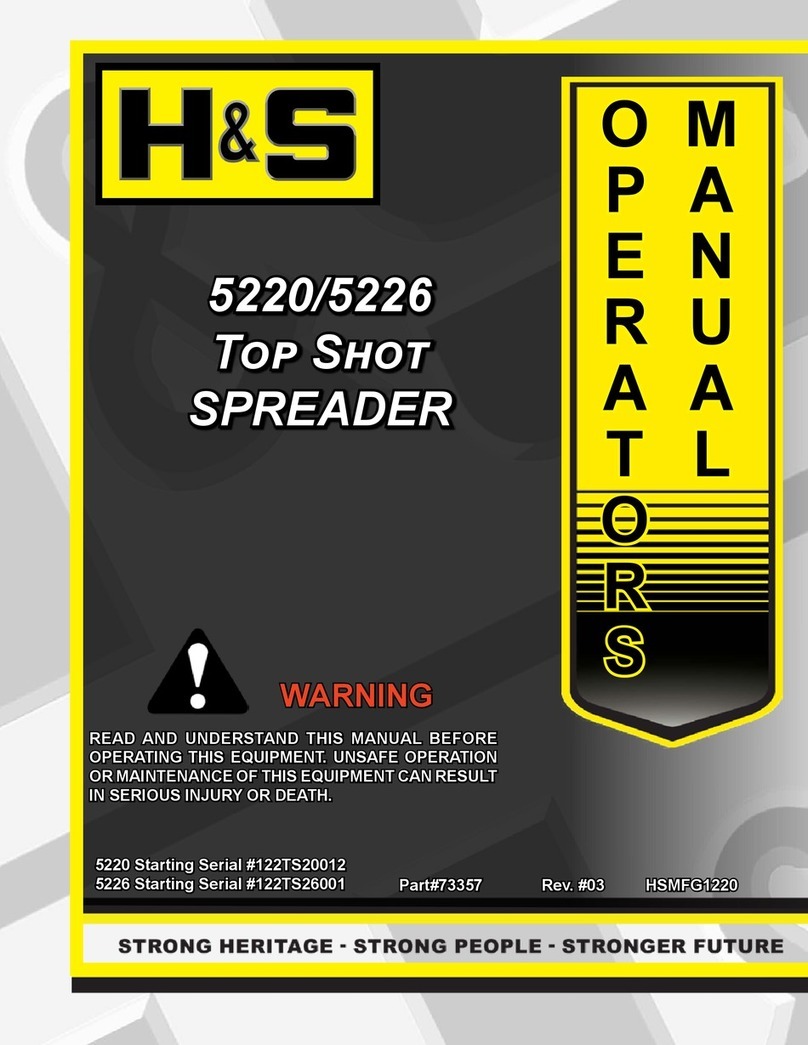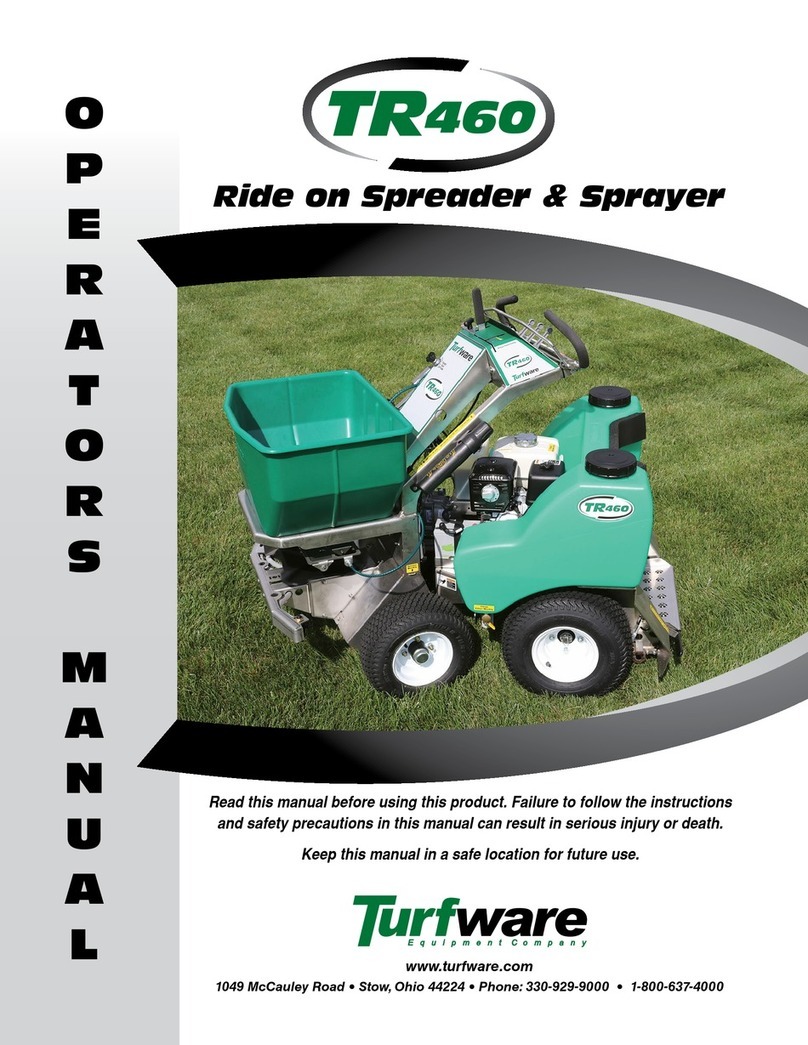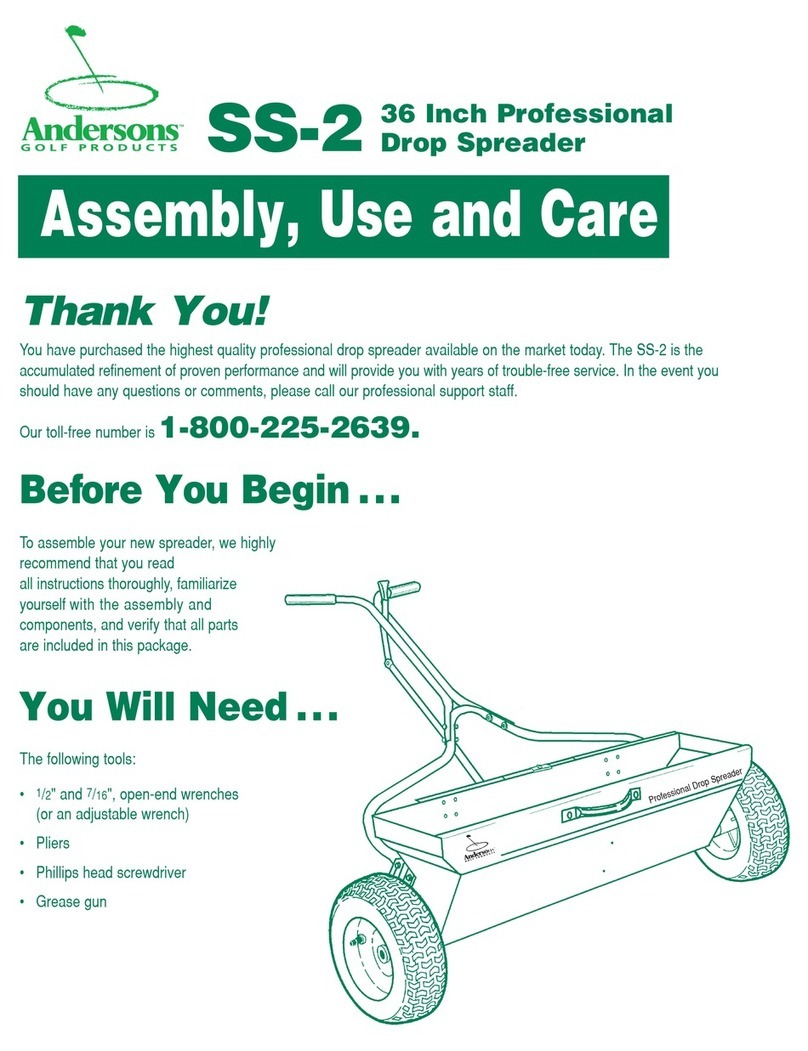~ 3~
4. Check Rate
It is the responsibility of the operator to properly calibrate the spreader before applying any material.
Making a precision application is simply a matter of filling up the hopper, moving the lever so the cam gauge is
against the stop, walking or driving at your selected speed, and double checking your application rate.
It is important that you check your rate to see that the setting you have chosen from the charts are giving you the
results you want. Atmospheric conditions alone can affect the flow of materials.
Most rates are listed in pounds applied per 1,000 square feet.
Note: Always move the cam gauge away from the stop (bottom closed) before attempting to set the cam gauge.
Check your rates as follows:
With Optional Calibration Pan: (Part #28368584 for 36” Spreader or #28248584 for 24” Spreader)
24” Turf Tender Drop Spreader
•Attach optional Gandy calibration pan under spreader
•Fill spreader full
•Push or Pull spreader 50 feet
•Weigh the amount of material that was caught in the calibration pan
•Multiply that weight x 10 to get pounds of material applied per 1,000 square feet
36” Turf Tender Drop Spreader
•Attach optional Gandy calibration pan under spreader
•Fill spreader full
•Push or Pull spreader 50 feet
•Weigh the amount of material that was caught in the calibration pan
•Multiply that weight x 6.7 to get pounds of material applied per 1,000 square feet
42” Turf Tender Drop Spreader
•Attach optional Gandy calibration pan under spreader
•Fill spreader full
•Push or pull spreader 50 feet
•Weigh the amount of material that was caught in the calibration pan
•Multiply that weight x 5.7 to get pounds of material applied per 1,000 square feet
If necessary, adjust cam gauge up or down and check again.
Calibration: (Know Area)
It is recommended that when calibrating chemical or fertilizer to not apply directly to the ground.
Lay down a large tarp or drop cloth to collect all material to be reused after calibrating.
Make sure you have enough material to refill the spreader.
•Fill the spreader level full
•Weigh the bag of material (remaining amount of material left in bag) and write that down
•Treat a known area, such as 1,000 square feet.
•Refill spreader level full (same level as last fill)
•Weigh the remaining bag of material (remaining amount of material left in bag) and write that down
•Subtract the left over weight from the starting weight, this is what you applied in pounds per 1,000 square feet
If necessary, adjust cam gauge up or down and check again.
You can check on smaller areas, such as 500 sq. ft. or 250 sq. ft., using 1/2 or 1/4 of the rate per 1,000 sq. ft.
